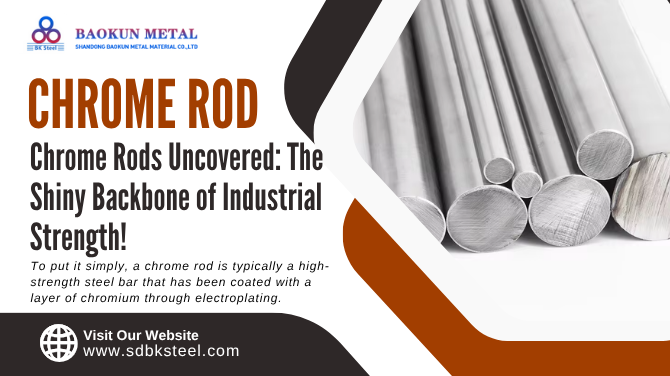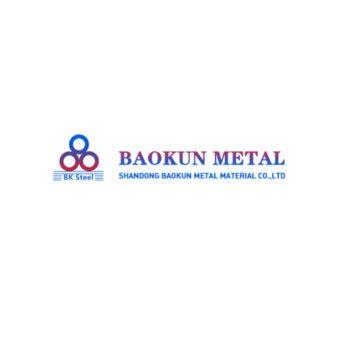Notifications

11 minutes, 3 seconds
-90 Views 0 Comments 0 Likes 0 Reviews

When we picture the titans of modern industry—massive hydraulic presses, precision CNC machines, robust construction equipment—rarely do we pause to consider the hidden components that bear the brunt of the work. Yet, deep inside these engineering marvels lies a shining, unsung hero: the chrome rod. Sleek, resilient, and critical to performance, chrome rods are far more than just polished metal cylinders. They are, in fact, the backbone of countless heavy-duty machines operating in some of the world’s toughest environments.
In the vast world of industrial manufacturing and heavy machinery, one component quietly but powerfully holds things together — the chrome rod. These sleek, shiny metal rods are not just about aesthetics; they are fundamental to the strength, durability, and performance of countless machines we rely on daily.
At Shandong Baokun Metal Material Co. Ltd, we understand the critical role that quality chrome rods play in creating equipment that withstands extreme conditions and delivers consistent performance.
To put it simply, a chrome rod is typically a high-strength steel bar that has been coated with a layer of chromium through electroplating. This shiny, mirror-like finish isn’t just for aesthetics—it plays a critical role in enhancing surface hardness, corrosion resistance, and wear performance. Chrome rods are most commonly used in hydraulic cylinders, pneumatic systems, and precision equipment where linear motion and high stress are constant factors.
Transitioning from their basic definition, let’s explore why chrome rods are indispensable in so many sectors.
Today’s industrial environments demand components that can withstand extreme pressure, repeated motion, and harsh exposure to elements like moisture, dust, and chemicals. A typical machine without a chrome rod in its hydraulic or pneumatic cylinder simply wouldn’t last under these conditions.
Enter the chrome rod, which offers:
These properties are crucial for maintaining the reliability and longevity of machinery. Without the durability of chrome rods, equipment downtime and maintenance costs would skyrocket.
Furthermore, as automation becomes more prevalent and industries strive for greater efficiency, the need for components that offer both precision and strength becomes even more pressing. The chrome rod fits that requirement perfectly, providing a durable interface that ensures smooth and accurate motion in even the most demanding applications.
The Manufacturing Process: How Chrome Rods Are Made
First, a high-quality steel rod—usually made from medium carbon steel or alloy steel—is precision ground to a fine tolerance. The surface is then meticulously cleaned and prepared for chrome plating. Through a controlled electroplating process, a thin layer of chromium—usually between 20 to 40 microns—is applied uniformly around the rod’s surface.
This chrome layer provides not only the signature reflective finish but also the critical mechanical properties mentioned earlier. After plating, the rod is polished again to ensure a micro-smooth surface finish, typically below 0.2 µm Ra, which reduces friction and extends seal life in hydraulic cylinders.
But that’s not all. As technology advances, many manufacturers—like Shandong Baokun Metal Material Co. Ltd—have started incorporating advanced quality control measures, such as ultrasonic testing, hardness evaluation, and salt spray tests, to ensure that every chrome rod meets international performance standards.
Key Characteristics That Make Chrome Rods Indispensable
Types of Chrome Rods and Their Applications
Chrome rods come in several variants to meet the diverse needs of industry:
Without this chrome finish, the rod would quickly deteriorate, causing system leaks and failures. The ultra-smooth surface also helps seals maintain a tight fit, preventing fluid leaks which are costly and dangerous.
Industries that depend on chrome rods include:
Each application demands specific tolerances, sizes, and finishes tailored to their operational challenges.
Material Specifications and Standards
Chrome rods are often made from:
Challenges in Chrome Rod Applications
Innovations in Chrome Rod Technology
Modern advances include:
How to Choose the Right Chrome Rod Supplier?
When selecting a supplier, consider:
Shandong Baokun Metal Material Co. Ltd excels in all these areas, providing dependable chrome rods globally.
Even though chromium plating calls for hazardous chemicals, eco-friendly techniques are quickly gaining traction:
Why Shandong Baokun Metal Material Co. Ltd Leads the Way?
Our company combines advanced tech with experienced craftsmanship, ensuring every chrome rod meets or exceeds expectations. We serve industries worldwide with high-quality, durable products backed by exceptional customer service.
Chrome rods are not just shiny metal bars—they are critical components that enhance the performance and reliability of industrial machinery worldwide. Their unmatched durability, corrosion resistance, and smooth operation make them indispensable in hydraulic systems and beyond.
Next time you see a heavy machine working flawlessly, remember the chrome rod inside is playing its part as the silent, shiny backbone of strength.
Q1: What industries benefit most from chrome rods?
A1: Manufacturing, construction, mining, agriculture, oil & gas, aerospace, and defense industries rely heavily on chrome rods.
Q2: How thick is the chrome layer on a typical chrome rod?
A2: Usually between 20 to 40 microns, providing a balance between protection and durability.
Q3: Can chrome rods be customized?
A3: Yes, suppliers like Shandong Baokun offer custom sizes, coatings, and hardness based on application needs.
Q4: What maintenance is required for chrome rods?
A4: Regular lubrication, inspection for pitting or corrosion, and timely replacement extend their life.
Q5: Are chrome rods environmentally friendly?
A5: Advances in plating technology and waste management have improved environmental impact, and responsible suppliers follow strict regulations.

